We set off for Lismore having liked the look of it previously and stopped first to take a closer look at an art piece we had seen often, called Golden Harvest. It consists of 42 stalks of grain in bronze and copper coated stainless steel. It is 6 metres high and was installed in November 2002. We also stopped at a greyhound statue.
The Lismore castle made a lovely sight as we drove into the town
. We stopped at the bridge to take some photos and later we also saw some of the views of the castle at night.
We went to the Lismore Experience, advertised as a audio-visual experience which proved to be basically a film with some extra displays. The lady at the counter referred to it as a filum which is what Kim Hill always says. We were the only people when she turned it on but three other groups arrived as we were watching. I am not sure we would have bothered to go it we had known it was a film but it was well done. It went into the history of the town and also mentioned places in the area we might like to visit. We were wished 'Cead mile failte', the traditional Irish greeting.
The town dates to 636 when Abbot Cathred arrived here with about 800 monks and set up a community. Although he died within the next year the community lasted. By the 10th century it was a major site of religious learning with over 1000 scholars
. Even before the Normans landed they had a French Abbot and both French and Irish were spoken in the region.
There are now 2 cathedrals in the town named after the Abbot, St Cathred. The older one is Protestant and the newer Catholic one was built in the 19th century.
When Henry II visited Ireland it said he came with a very large amount of sealing wax. He had Oaths of Allegiance sworn by the Irish Lords and Archbishops, who gave him their ‘seal of approval’. During his visit he picked out a good spot for a castle but it was not built until John became King. This did not last long and after it was demolished a Bishops Residence was built on the site. When work was done in the area in recent time various church treasures were discovered including a crozier and silver items that predate Henry.
The last Bishop of Lismore to live in the residence was also the Archbishop of Cashel we had heard about – with 47 children
. He gave the residence to Walter Raleigh who was very wealthy with a lot of land outside England. He introduced both the potato and the cherry tree to Ireland. He also cut down a lot of the tress in the area when he discovered iron ore on his lands as well. The trees made charcoal to smelt the iron. Later trees were replanted but they have more of an English feel.
The castle was also owned by Boyle, who had arrived in Ireland with little money but made a fortune in his time. He lived here with his wife and 14 children. The youngest was Robert Boyle, the chemist who discovered Boyles Law.
In 1753 the 4th Duke of Devonshire married into the family and the couple took over the castle. It is still the Irish residence of the present Duke and Duchess. While owned by the family the castle was extended using stone from Derbyshire and the bridge built. The gardens have recently been restored and are open to the public although the house is not
. We were told that a number of ‘famous’ people have stayed there and that the former chapel is now the Ballroom.
There is a historic book, the Lismore Book, written in Latin that is now held in Dublin. It has a variety of writing in it, including the travels of Marco Polo, as well as a lot of religious writing.
We were tempted to visit a couple of nearby sites we were told about. One is a Folly, built by Arthur Kiely-Ussher for his wife. The extravagant gate lodge and towers were the only part of the castle to be built as money ran out soon after their completion. The family then resided in a modest house on the grounds (since demolished). It reminded me a bit of property developers recently, although these seemed to have used their own money. The other was the Dromana Gate, a Hindu-Gothic gate lodge dating from around the 1830s. It was originally built from wood or papier mache to greet the owner of Dromana Estate and his wife on returning from their honeymoon in 1826
. The couple was so enchanted with it that they had it reconstructed in more durable materials. The structure was probably inspired by the Brighton Pavilion in England. It is the only example of this type of architecture in Ireland.
We went into the nearest pub for lunch and it was a good choice. The food was good and the atmosphere interesting, especially because a number of locals arrived to watch a football match. The Irish accents were so thick I could understand about one word in ten.
We then did a totally tourist thing and went to Blarney Castle because I thought we had to. It was as commercialized as I thought it would be but done with a sense of humour. The castle would be just another castle if it were not for the Blarney stone. We did what most people do and went straight to the castle and climbed to the top so John could kiss the stone – no way was I going to. There is an official photographer there and we were in the middle of an American tour party
. The triangular stone is under the battlements and you slide out to kiss it. There are now iron railings so it is safe…. But it is a long way up (4 floors) and that was all I could think of. I insisted on buying the 2 photos although John really only wanted one.
The Castle is the third structure on the site. A 10th century wooden hunting lodge was replaced by a stone building in the 13th century. Cormac MacCarthy, King of Munster, started to build the castle in 1446, and it was the most powerful fortress of its time, set in 8 acres surrounded by a wall with watchtowers. It was built on solid rock like many other castles we have seen.
Elizabeth I is credited with introducing the word blarney. Her emissary tried to get Cormac MacCarthy, a descendent of the original builder, to abandon his historical rights and accept English authority. He was always met with long eloquent protestations of loyalty and honeyed flattery of the Queen but no actual written agreement
. Elizabeth allegedly exclaimed "This is all Blarney".
There was a plaque comparing Blarney and Baloney. Blarney is the varnished truth while baloney is the unvarnished lie. Boloney is flattery laid on with a trowel. Blarney is flattery laid on with the lips and that is why you have to kiss a stone to get it.
The kissing of the stone has allegedly happened for over 200 years. Mind you, I wasn’t sure how much of what was written was true and how much was blarney. George Bernard Shaw didn’t kiss it and explained that he didn’t need to seek eloquence at Blarney because his natural gifts in that direction were sufficient, if not somewhat excessive.
We did look at the castle itself. The rooms were bare but with information panels. The slabs of stone on the parapets weigh about a ton each, and were lifted by pulleys powered by horses and placed so water was deflected away from the walls to protect the timber roof. The kitchen was on the top floor, previously a bedchamber for the Lord. The construction of a huge fireplace, large enough to cook an entire beast, turned it into the kitchen. It was convenient because it was close to the banqueting hall, it reduced the risk of fire and boiling oil was available close to the battlements.
There was a family room that had a fireplace within a fireplace
. The original one was also large enough to cook a beast but later a smaller one was built inside. We also saw the Murder room, something we had heard about at Cashel. There was a hole above the lobby, now with a grill covering it, from which unwelcome visitors could have stones, boiling liquids etc dropped onto them.
After this we wandered through the Poison garden. The justification for having this was education. It included opium poppies and cannabis as well as rhubarb and foxglove.
We finally visited Rock Close. We were told that it is a former Druid site that former owners landscaped. There was a dolmen there, an ancient burial site, as well as a Druids cave. There was an area called the witches kitchen and a witches stone. We went down the wishing steps but not backwards- it is meant to be lucky to go down backwards but I thought you would use your luck getting down them safely.
There were other gardens but we were ready to leave
. The walk back to the car took us past another attractive area of the gardens with waterfalls, and out through the gift shop.
We went into Cork to go to the English Food market. The English Market is so called because in it's early days the traders could only be those of English extraction, however these days the doors are open to all traders and buyers! However, we couldn’t be a buyer as we couldn’t find a park so we decided to leave and find a smaller place.
We went to Cobh, and the first thing we saw was an amazing cathedral. It was built between 1868 and 1915, with a substantial amount of donated money coming from the USA and Australia. The noticeboard said visitors were welcome and gave the times of services at which time it was closed to tourists. However, there was an unannounced meeting in the cathedral so we quietly left.
Cobh was called Queenstown for a number of years after Queen Victoria visited
. Eventually the name Cobh was restored.
We went down to the waterfront to see the statue of Annie Moore and her two brothers. Annie Moore became the first ever emigrant to be processed in Ellis Island when it officially opened on 1st January 1892. Annie and her brothers sailed from Queenstown on the SS Nevada on the 20th December and arrived after 12 days of travelling in steerage. The statue in Cobh was unveiled by President Mary Robinson on the 9th February 1993. A similar statue of Annie can be found in Ellis Island, New York which represents not only the honour of her being the first emigrant to pass through Ellis Island but also stands as a symbol of the many Irish who have embarked on that very same journey.
We had wanted to see the memorial to the Lusitania which had been torpedoed off this coast, but unfortunately we could not find the site. We also heard that this was the last port of call for the Titanic before it sunk. While we were there a large Brittany ferry left port.
On our way back we did a couple of caches before making home the target. It was sunny and we hoped to see a sunset at the house. We arrived back in time to get tea underway while we watched the sunset. The best view was from our bedroom although the view from the kitchen was also nice but a big tree was in the way. We managed to get a few nice photos.
A load of Blarney
Saturday, September 11, 2010
 Ballymacaw, County Waterford, Ireland
Ballymacaw, County Waterford, Ireland
Other Entries
-
100Catching up with Chalky and Pam
Aug 2616 days prior Chichester, United Kingdomphoto_camera16videocam 0comment 0
Chichester, United Kingdomphoto_camera16videocam 0comment 0 -
101Visiting Leeds Castle
Aug 2715 days prior Chichester, United Kingdomphoto_camera10videocam 0comment 0
Chichester, United Kingdomphoto_camera10videocam 0comment 0 -
102Chichester to Winchester to London
Aug 2814 days prior London, United Kingdomphoto_camera26videocam 0comment 0
London, United Kingdomphoto_camera26videocam 0comment 0 -
103Fast cars, a Palace and treacle
Aug 2913 days prior London, United Kingdomphoto_camera6videocam 0comment 0
London, United Kingdomphoto_camera6videocam 0comment 0 -
104Cruising down the River
Aug 3012 days prior London, United Kingdomphoto_camera11videocam 0comment 0
London, United Kingdomphoto_camera11videocam 0comment 0 -
105There'll be blue birds over......
Aug 3111 days prior London, United Kingdomphoto_camera22videocam 0comment 0
London, United Kingdomphoto_camera22videocam 0comment 0 -
106To Ireland begorrah...
Sep 0110 days prior Ballymacaw, Irelandphoto_camera2videocam 0comment 0
Ballymacaw, Irelandphoto_camera2videocam 0comment 0 -
107A fox on the run
Sep 029 days prior Ballymacaw, Irelandphoto_camera3videocam 0comment 0
Ballymacaw, Irelandphoto_camera3videocam 0comment 0 -
108Cuisin' the Copper Coast
Sep 038 days prior Ballymacaw, Irelandphoto_camera6videocam 0comment 0
Ballymacaw, Irelandphoto_camera6videocam 0comment 0 -
109Quick note to everyone re earthquake
Sep 047 days prior Ballymacaw, Irelandphoto_camera0videocam 0comment 1
Ballymacaw, Irelandphoto_camera0videocam 0comment 1 -
110A shaky start
Sep 047 days prior Ballymacaw, Irelandphoto_camera6videocam 0comment 0
Ballymacaw, Irelandphoto_camera6videocam 0comment 0 -
111From Famine ships to hurling
Sep 056 days prior Ballymacaw, Irelandphoto_camera4videocam 0comment 0
Ballymacaw, Irelandphoto_camera4videocam 0comment 0 -
112By Hook or by Crooke
Sep 065 days prior Ballymacaw, Irelandphoto_camera14videocam 0comment 0
Ballymacaw, Irelandphoto_camera14videocam 0comment 0 -
113It's a long way...
Sep 074 days prior Ballymacaw, Irelandphoto_camera17videocam 0comment 0
Ballymacaw, Irelandphoto_camera17videocam 0comment 0 -
114Wandering about Wexford
Sep 083 days prior Ballymacaw, Irelandphoto_camera15videocam 0comment 0
Ballymacaw, Irelandphoto_camera15videocam 0comment 0 -
115The Rain of Kerry
Sep 092 days prior Ballymacaw, Irelandphoto_camera5videocam 0comment 0
Ballymacaw, Irelandphoto_camera5videocam 0comment 0 -
116Nothin' much doin'
Sep 101 day prior Ballymacaw, Irelandphoto_camera3videocam 0comment 0
Ballymacaw, Irelandphoto_camera3videocam 0comment 0 -
117A load of Blarney
Sep 11 Ballymacaw, Irelandphoto_camera15videocam 0comment 0
Ballymacaw, Irelandphoto_camera15videocam 0comment 0 -
118The products of Waterford
Sep 121 day later Ballymacaw, Irelandphoto_camera13videocam 0comment 0
Ballymacaw, Irelandphoto_camera13videocam 0comment 0 -
119Doin' Dublin
Sep 132 days later Ballymacaw, Irelandphoto_camera14videocam 0comment 1
Ballymacaw, Irelandphoto_camera14videocam 0comment 1 -
120Old fossils in Kilkenny
Sep 143 days later Ballymacaw, Irelandphoto_camera17videocam 0comment 0
Ballymacaw, Irelandphoto_camera17videocam 0comment 0 -
121Ciao Ballymacaw
Sep 154 days later Rome, Italyphoto_camera2videocam 0comment 0
Rome, Italyphoto_camera2videocam 0comment 0 -
122Cheers Bros
Sep 165 days later Rome, Italyphoto_camera12videocam 0comment 0
Rome, Italyphoto_camera12videocam 0comment 0 -
123Roamin' Rome
Sep 176 days later Rome, Italyphoto_camera8videocam 0comment 0
Rome, Italyphoto_camera8videocam 0comment 0 -
124All aboard please!!
Sep 187 days later Civitavecchia, Italyphoto_camera8videocam 0comment 0
Civitavecchia, Italyphoto_camera8videocam 0comment 0 -
125Birthday on the Med
Sep 198 days later Livorno, Italyphoto_camera38videocam 0comment 0
Livorno, Italyphoto_camera38videocam 0comment 0 -
126A lucky break at Monte Carlo...
Sep 209 days later Monte-Carlo, Monacophoto_camera34videocam 0comment 3
Monte-Carlo, Monacophoto_camera34videocam 0comment 3 -
127The rain in Spain...
Sep 2110 days later Barcelona, Spain and Canary Islandsphoto_camera22videocam 0comment 0
Barcelona, Spain and Canary Islandsphoto_camera22videocam 0comment 0 -
128Getting into Gaudi
Sep 2211 days later Barcelona, Spain and Canary Islandsphoto_camera6videocam 0comment 0
Barcelona, Spain and Canary Islandsphoto_camera6videocam 0comment 0 -
129Meandering through Mallorca
Sep 2312 days later Mallorca, Spain and Canary Islandsphoto_camera5videocam 0comment 0
Mallorca, Spain and Canary Islandsphoto_camera5videocam 0comment 0 -
130A lazy day at sea
Sep 2413 days later Palma de Mallorca, Spain and Canary Islandsphoto_camera0videocam 0comment 0
Palma de Mallorca, Spain and Canary Islandsphoto_camera0videocam 0comment 0 -
131Out of Africa
Sep 2514 days later La Goulette, Tunisiaphoto_camera9videocam 0comment 0
La Goulette, Tunisiaphoto_camera9videocam 0comment 0 -
132Lazy Sunday in Sicily
Sep 2615 days later Trapani, Italyphoto_camera7videocam 0comment 0
Trapani, Italyphoto_camera7videocam 0comment 0 -
133Amazing Amalfi
Sep 2716 days later Naples, Italyphoto_camera7videocam 0comment 0
Naples, Italyphoto_camera7videocam 0comment 0 -
134Rendezvous with Irene and Raewyn
Sep 2817 days later Civitavecchia, Italyphoto_camera1videocam 0comment 1
Civitavecchia, Italyphoto_camera1videocam 0comment 1 -
135All at sea
Sep 2918 days later Civitavecchia, Italyphoto_camera3videocam 0comment 1
Civitavecchia, Italyphoto_camera3videocam 0comment 1

 Ballymacaw, County Waterford, Ireland
Ballymacaw, County Waterford, Ireland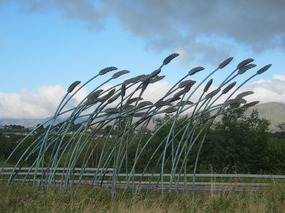
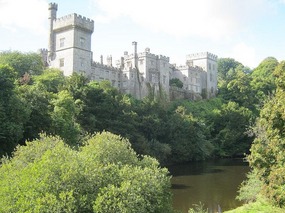
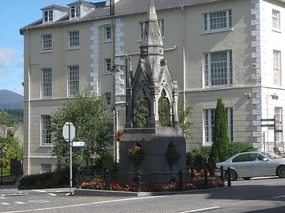
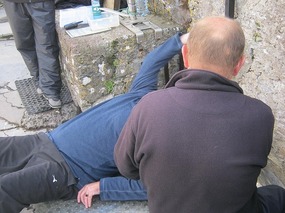
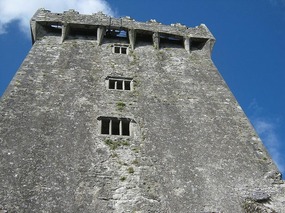
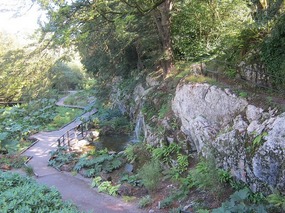
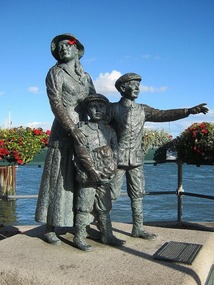
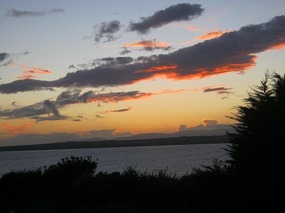
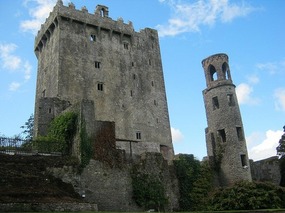







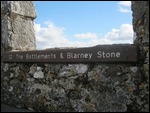
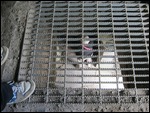
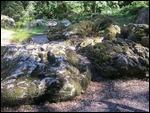
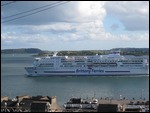
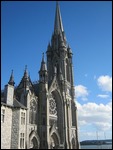
2025-05-22